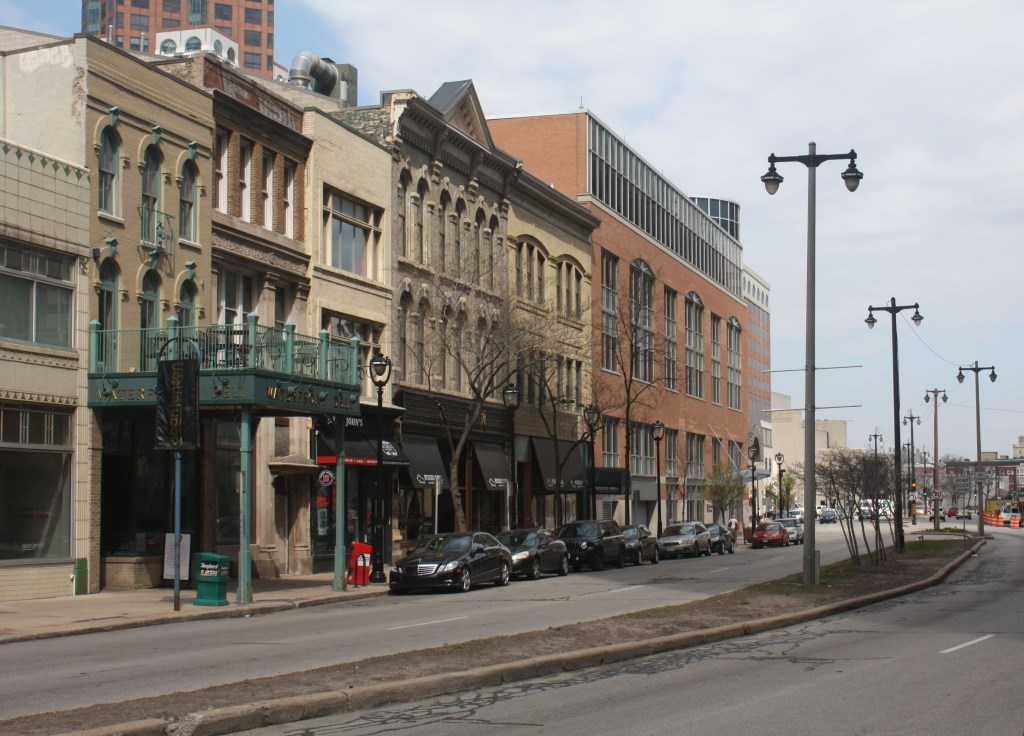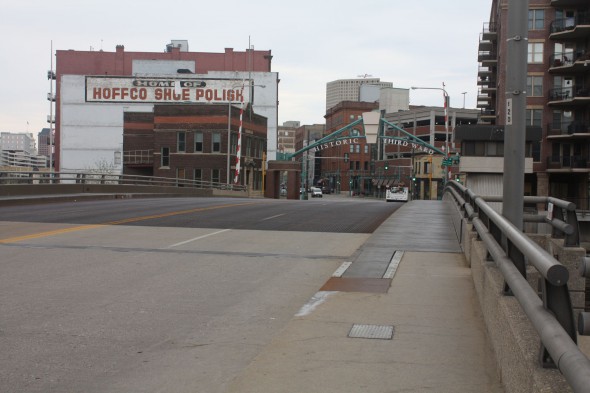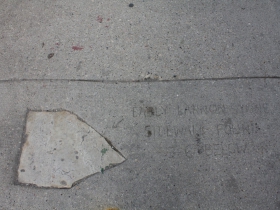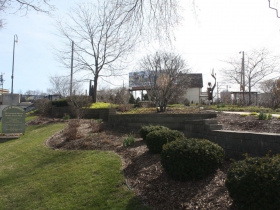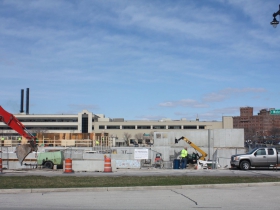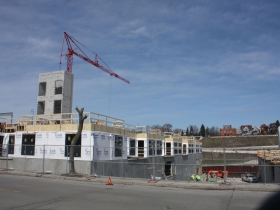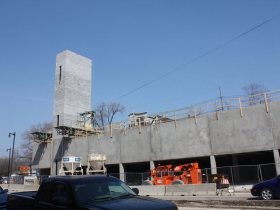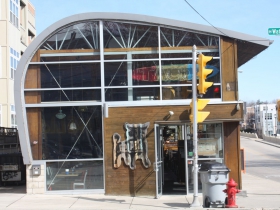Water Street Is Old Indian Trail
The first street built ran crooked, with gambling houses and other dens of vice.
In June 1836, North Water Street, then known as East Water Street, became the city’s first street. It was probably also the most crooked street, in more ways than one. It was created a year after Solomon Juneau and his business partner, Morgan L. Martin, registered their plan to develop Juneautown and the Third Ward on the east side of the Milwaukee River.
Early settler Sylvester Pettibone, behind a plow pulled by eight oxen, graded the new street between E. Michigan and E. Wisconsin Streets to the cheers of early Milwaukeeans. The spectators then began a Milwaukee tradition of celebrating significant (and sometimes not so significant) events with drink. They consumed 30 baskets of champagne to mark the occasion.
North Water Street overlaid an Indian trail that followed the contours of the river, causing the street to twist and turn as it works its way from the N. Water Street bridge on the south, to N. Humboldt Avenue on the north. It took more than 20 years to fully fill in and grade the street.
North Water Street became the most important commerce street in the city during the 19th century, with many of the city’s leading businesses on it. Not all of the businesses were welcome. In 1888, a store owner near E. Wells Street complained that the saloons and disreputable houses in the area were keeping “respectable ladies” away from retail shops on the street. He lamented that instead they were shopping on Grand Avenue and Wisconsin Street (now known as East and West Wisconsin Avenue).
In the late 1890s, the police clamped down on another vice by conducting raids on N. Water Street gambling houses. One such expedition netted four gamblers, one roulette wheel, one faro table, a craps table, and poker supplies. Another raid a short time later yielded a similar load.
The street has seen some of the most dramatic events in the city’s history. In 1854, after an abolitionist mob freed fugitive slave Joshua Glover from the city jail on Courthouse Square (now Cathedral Square), he was taken by horse-drawn wagon down N. Water Street and across the bridge, on to freedom in Canada. In 1861, hundreds of irate Germans marched down N. Water Street to confront Michigan Street bankers during the “Bank Riot.” The end of the Civil War in 1865 drew huge crowds to celebrate on the street. In 1883, onlookers saw a slow, solemn parade down the street and across the bridge, carrying the remains of most of the 72 victims of the Newhall House fire to their final resting places in Forest Home and Calvary cemeteries.
The Water Street bridge was known as the Walker’s Point Bridge until 1866, when the Common Council renamed it. The bridge was not always in the best of condition, especially during the summer of 1891. In June of that summer, a horse put its hoof through rotten planks on the span. In July, residents complained that it took too long to manually open and close the swing bridge. Waits of up to 19 minutes were reported as seething streetcar riders complained that “time is money.” An effort by bridge tenders to speed things up backfired. One day in August, after a few ships passed through the opening of the swing bridge, tenders alerted an oncoming steamer that it should stop as they closed the bridge. But the steamer Chicago was unable to stop quickly enough and rammed the closed bridge, damaging it and almost sending a streetcar and wagon into the river.
The wait of 19 minutes was insignificant when compared to the four-day closing caused by the Fred Pabst, a steamer that stuck on the bottom of the river alongside the opened swing bridge in January 1899. The combination of a full load and lower winter water levels caused the ship to ground. A fleet of tugboats worked for several days to free the stuck ship. Finally, on the fourth day, two tugs were able to drag the ship to a nearby dock and the bridge reopened.
Today, the N. Water Street bridge is no longer operated manually and opening it is much more efficient, but there are still complaints about too much time spent waiting while boats pass under the open span.
Carl Baehr, a Milwaukee native, is the author of Milwaukee Streets: The Stories Behind their Names, and articles on local history topics. He has done extensive historic research for his upcoming book, Dreams and Disasters: A History of the Irish in Milwaukee. Baehr, a professional genealogist and historical researcher, gives talks on these subjects and on researching Catholic sacramental records.
Along Water Street
City Streets
-
Revised Milwaukee Streets Book Dishes the Dirt
 Nov 3rd, 2025 by Michael Horne
Nov 3rd, 2025 by Michael Horne
-
The Curious History of Cathedral Square
 Sep 7th, 2021 by Carl Baehr
Sep 7th, 2021 by Carl Baehr
-
Gordon Place is Rich with Milwaukee History
 May 25th, 2021 by Carl Baehr
May 25th, 2021 by Carl Baehr


